Thinking through the lens of a bee
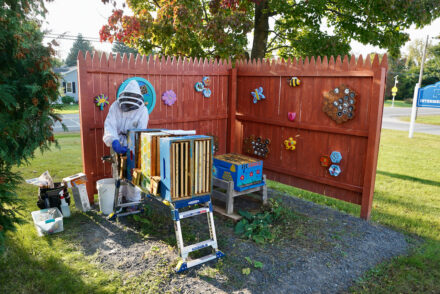
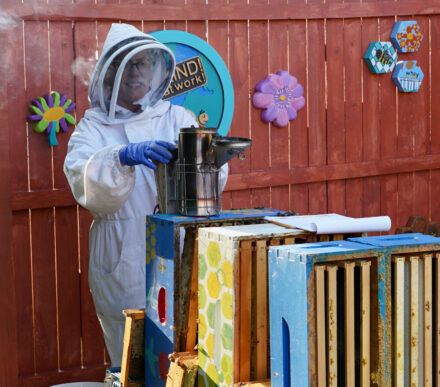
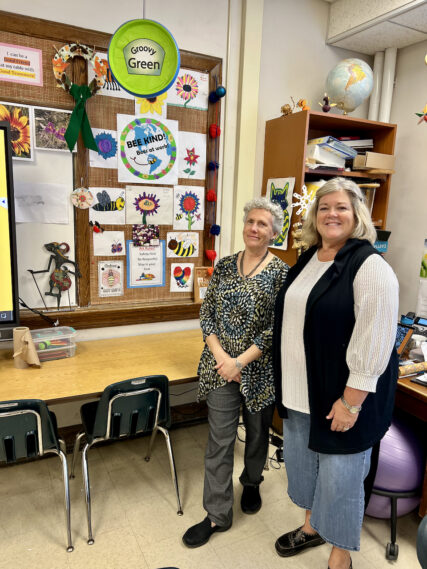
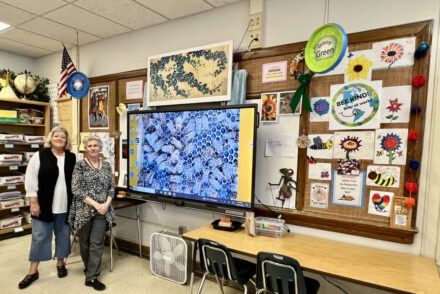 By John T Ryan
By John T Ryan
Peru – October 23, 2023 Most people recall studying bees in school; however, the Peru Primary and Intermediate School students have a unique opportunity. There’s an active bee hive in the school’s front yard, and studying bees is being integrated into the schools’ curricula. The hive is one art teacher Kathy Cantwell’s ten hives, and she’s thrilled about it being at the school.
5th grade teacher Beth Dubay recalled how the bee program got started.” In 2018, I applied for the New York State Master Teacher Program, which includes researching a topic way above your teaching level. Even though I’m deathly afraid of bees, they intrigue me, so I started researching them. One day, my co-teacher and I tried to figure out why bees make hexagonal hives rather than circular hives or some other shape. We asked Kathy if she had some paper we could use to construct a hive. When we told her about the bees, she said, “I’m a beekeeper!” And so, the bee program began—Kathy’s the beekeeper and bee expert while Beth works at integrating bee study into the school’s classrooms. Once “deathly afraid” of bees, Beth would like to become a beekeeper.
Kathy Cantwell explained why she thinks the program is important. “This a unique opportunity right now because so many people are interested in the environment. They want something hopeful and positive. Learning about bees and caring for bees benefits all aspects of the environment. When a culture takes good care of its women and children, the culture improves. And when civilization takes care of bees, the whole civilization improves. There are so many aspects of it.”
Beth Dubay gave specifics.” The 6th-grade teachers introduce topics such as bee venom therapy, pesticides that endanger bees, colony collapse disorder, and the history of bees. The bees have also been a part of the school’s Ag Day.” Kathy added, “The 4th graders help with that. Every grade has gotten involved. The 5th graders paint sunflowers. The third graders planted 150 crocus plants each of the past three years. My vision is to have every lawn in the school covered with crocus in the spring.” Flower nectar is essential to a bee colony’s survival.
Both teachers emphasized that the bee education program has been a school-wide effort. Kathy commented, “Everybody’s been very supportive. I haven’t heard any negative feedback. We did a lot of work in preparing. We worked with the board of education, lawyers, the superintendent, fellow teachers, buildings and grounds. The Champlain Valley Bee Association has been very supportive.” The teachers applied for and won three program grants and a local business made a generous donation, meaning the program operates with no or little cost to the school district.
Kathy Cantwell expressed her feelings eloquently: “What I hope the kids get out of this is that they will start thinking through the lens of a bee, looking at the environment differently. They look at how to be stewards of the environment because it greatly impacts the entire world.” 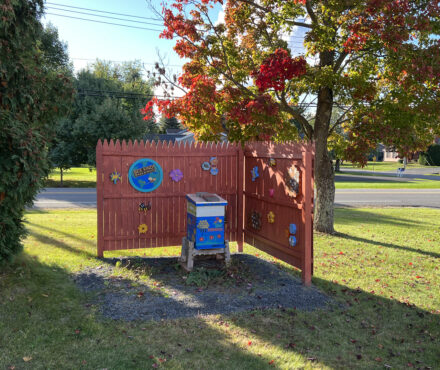
Posted: October 23rd, 2023 under Adirondack Region News, Agricultural News, Education News, Environmental News, Faces of Peru, General News, Northern NY News, Peru News, Peru School News, Peru/Regional History.
